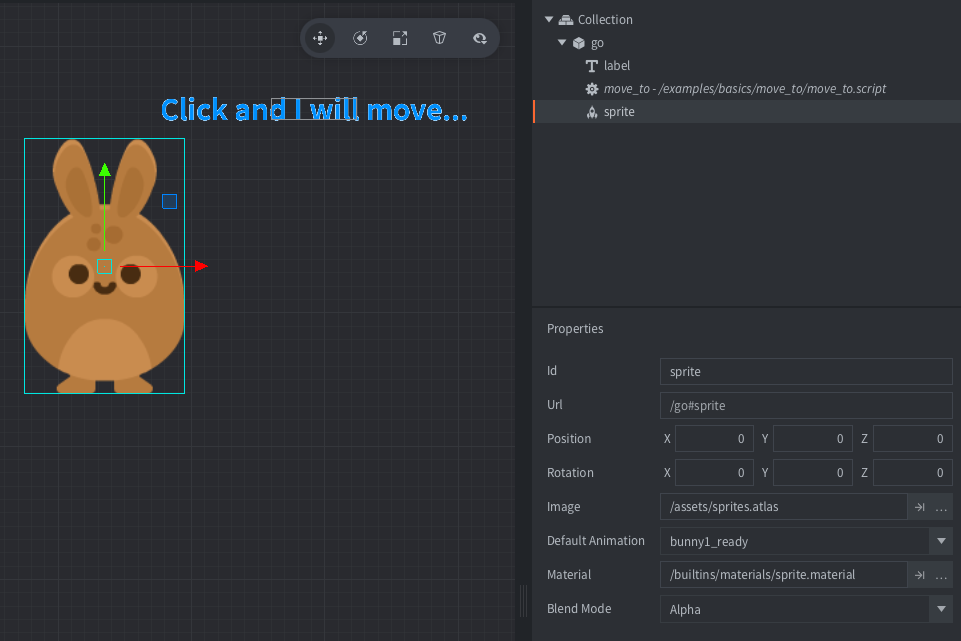Move to target
Setup

Scripts
move_to.script
function init(self)
msg.post(".", "acquire_input_focus") -- <1>
self.moving = false -- <2>
end
local function moved_to_position(self) -- <9>
self.moving = false
end
function on_input(self, action_id, action)
if action_id == hash("touch") and action.pressed then -- <3>
if not self.moving then -- <4>
msg.post("#label", "disable") -- <5>
self.moving = true -- <6>
local pos = vmath.vector3(action.x, action.y, 0) -- <7>
go.animate(".", "position", go.PLAYBACK_ONCE_FORWARD, pos, go.EASING_LINEAR, 0.5, 0, moved_to_position) -- <8>
end
end
end
--[[
1. Tell the engine that this game object ("." is shorthand for the current game object) should listen to input. Any input will be received in the `on_input()` function.
2. Store a flag in `self` (the current script component) to indicate if the game object is moving or not.
3. If we receive an input action named "touch" and it is pressed then run the following.
4. If the `moving` flag is not set.
5. Disable (don't show) the help text label.
6. Set the `moving` flag.
7. Create a new position called `pos` (of type `vector3`) where the user clicked.
8. Animate the game object's ("." is shorthand for the current game object) position to `pos`.
When the animation is done, call the function `moved_to_position()`.
9. The function `moved_to_position()` is called when the animation is done. It just resets the `moving` flag
so subsequent clicks will result in a new movement.
--]]If you want to play with these examples, you can get the project on Github.
Do you want to see more examples? Why not write a few yourself and submit a pull request? We love contributions.
GITHUB